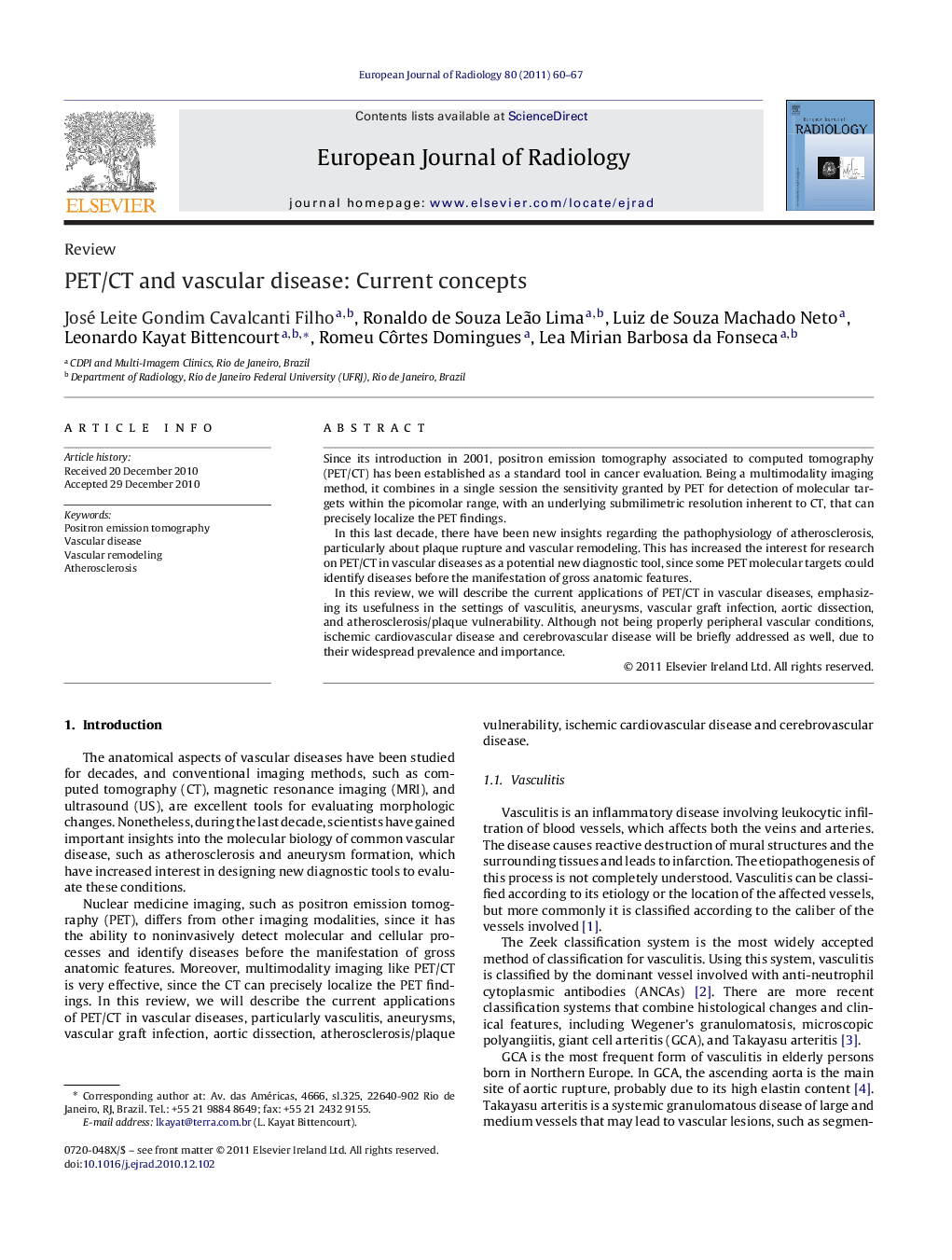| Article ID | Journal | Published Year | Pages | File Type |
|---|---|---|---|---|
| 4226511 | European Journal of Radiology | 2011 | 8 Pages |
Since its introduction in 2001, positron emission tomography associated to computed tomography (PET/CT) has been established as a standard tool in cancer evaluation. Being a multimodality imaging method, it combines in a single session the sensitivity granted by PET for detection of molecular targets within the picomolar range, with an underlying submilimetric resolution inherent to CT, that can precisely localize the PET findings.In this last decade, there have been new insights regarding the pathophysiology of atherosclerosis, particularly about plaque rupture and vascular remodeling. This has increased the interest for research on PET/CT in vascular diseases as a potential new diagnostic tool, since some PET molecular targets could identify diseases before the manifestation of gross anatomic features.In this review, we will describe the current applications of PET/CT in vascular diseases, emphasizing its usefulness in the settings of vasculitis, aneurysms, vascular graft infection, aortic dissection, and atherosclerosis/plaque vulnerability. Although not being properly peripheral vascular conditions, ischemic cardiovascular disease and cerebrovascular disease will be briefly addressed as well, due to their widespread prevalence and importance.
